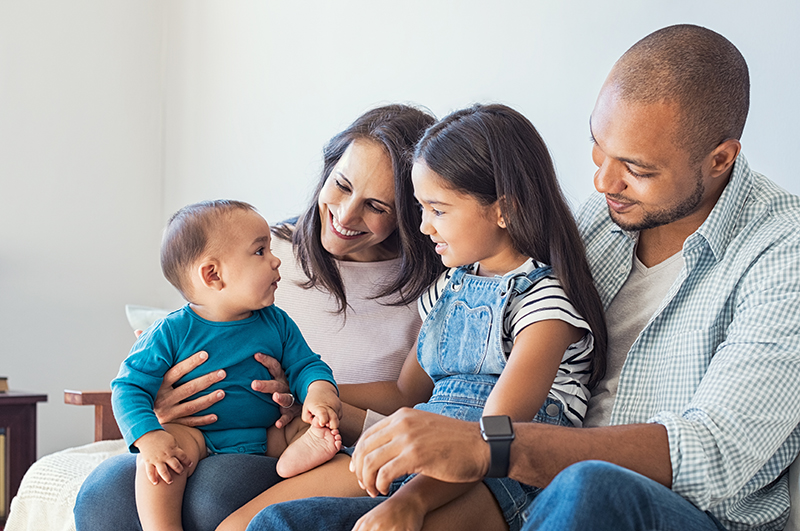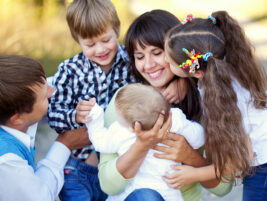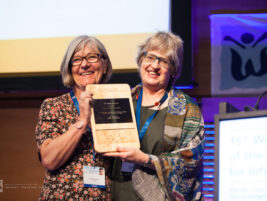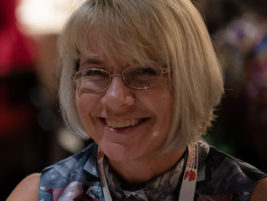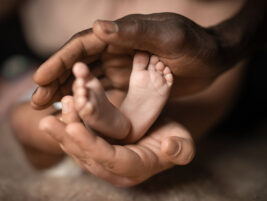I give my warm greetings to all WAIMH members and readers of Perspectives.
I would like to acknowledge the traditional owners of the land from which I’m working today in Australia. I am on the lands of the Wurundjeri people of the Kulin nation, the First Nations People who have cared for this land, nurturing a continuous culture for many, many thousands of years. I would like to honour and pay my respects to their elders, past, present, and emerging. We have so much to learn from our First Nations People about respect for each other, and respect for the environment.
World Infant, Child, and Adolescent Mental Health Day 2022
I am very pleased that, on 23 April 2022, the World Infant, Child, and Adolescent Mental Health Day will be launched.
The following is a brief talk I delivered with my colleagues on World Infant Child and Adolescent Mental Health Day in an online symposium which is available to anyone around the world.
We are at a time in our world when we are most acutely aware of the vulnerability of the human condition, the vulnerability of infants, children, and families. Our awareness about what is happening around us in the world is more acute than at any time in history. We have this troubling information at our fingertips. It is a time now when we must all work towards understanding and ensuring the optimal mental health of our children who will inevitably inherit the consequences of these worldwide crises.
In the context of the immense pressures on psychological health of infants, children and adolescents around the world at the moment, Dr Daniel Fung, Singapore, President of the International Association for Child and Adolescent Psychiatry and Allied Professions (IACAPAP), stepped forward and invited three other key organisations of professionals caring for the mental health of young people (The World Association for Infant Mental Health, the World Psychiatric Association Child and Adolescent Psychiatry Section and the International Society for Adolescent Psychiatry and Psychology), to come together to sponsor this important day to acknowledge the mental health needs infants, children, and adolescents.
My own work is at the Royal Children’s Hospital, and the Royal Women’s Hospital in Melbourne, Australia. I have a special interest in the emotional life, and difficulties, experienced by infants and very young children and how to support their parents in ensuring the best outcome for their children. Our clinical teams see very young children, and their parents, within the hospital context. Many of these infants with their families, have experienced major trauma with acute or chronic illness and trauma due to for example, being born premature or sick, or being unwell after surgery. In addition, infants and young children may be exposed to violence, including family violence, and can present to the hospital, or directly to one of many child and family agencies. I believe it is crucial for us to try and best understand the experience of very young children themselves in the context of stress and trauma.
We know that the baby arrives into this world “programmed”, ready for lively social interaction (Trevarthen, 2001).
The baby is born with the capacity to hear, see, to feel and to communicate. Babies can reach out to us and make connections if we are there, ready, and receptive. The baby uses gaze, voice and their hands, arms, and body to let us know something about what they are feeling and experiencing. They want to let us know.
Imagine yourself face-to-face with a young infant, who looks straight at you curiously, and then smiles… You have no option but to smile back! This is the process of starting to know the mind of the other at work, right from the beginning. Babies have the capacity for reading our emotional expressions, not quite reading our thoughts, but trying to figure out how we are feeling, where we are at, as we engage in lively conversation with them.
As ordinary “good enough” adults, we have the capacity to enter the inner world of a baby and toddler especially through free, playful communication even before the wonderful explosion of language occurs for the young child.
Of course, it’s not always like this for many infants around the world. It’s not like this for many children and adolescents around the world.
What happens if the baby reaches out to us and there is no response, or a response that is regularly devastatingly empty or disorganised and frightening? Infants and children experience mental health problems, with similar frequency and in many ways, with similar phenomenology to those experienced problems by adolescents and adults (Skovgaard et al., 2007).
This is the experience of many infants and young children, who receive an absent or confusing response, when their parents or carers have experienced severe trauma and distress in their own lives as children or young adults.
Families are also being traumatised in our present day through the impact of war, conflict and mass displacement in many areas such as the Middle East, Syria, Ethiopia, and Ukraine.
Families can be traumatised by a history of cultural persecution and intergenerational trauma. There is also death and dispossession as a consequence of war and conflict as in places such as Syria, Palestine, Ethiopia, Afghanistan, Yemen and Ukraine at the moment. “War is a public health emergency” (Goto et al., 2022). Huge populations of children face homelessness, food insecurity, starvation, and stunted growth, physical and developmental and infants and young children facing these crises require interventions on a very large-scale, including to ameliorate the associated emotional impact (Richter et al., 2017).
All communities have experienced widespread illness and death as part of the worldwide Covid-19 pandemic. Because of global warming, the world is also experiencing more and more natural catastrophes such as the extensive wildfires, storms, and floods. Again, the youngest in our communities will suffer greatly from the impact of global warming.
Within the period of infancy, childhood and adolescence, lie the roots of much of the mental health problems that might belie older youth and adults. There is increasing evidence that significant psychological and relationship trauma in the early years is associated with major mental illness in adulthood (Lyons-Ruth, 2008).
Now is the time for increased public and professional awareness of the mental health needs of infants, children, and adolescents, and of ways that we can intervene to support them.
Increasing global public awareness about child and adolescent mental health is a key goal of the World Infant Child and Adolescent Mental Health Day. Our other goals are to create greater mental health literacy and competencies in promoting child and adolescent mental health, also to reduce stigma. We seek to improve diagnosis, treatment and prevention of child and adolescent mental health disorders through the process of international cooperation and understanding.
It’s also essential that we reach out to communities with scarce resources to develop mental health services for children and families.
The World Association for Infant Mental Health, WAIMH, shares the overall goals of the World Infant, Child and Adolescent Mental Health Day, namely to:
- increase knowledge about mental development and disorders in infants and young children
- disseminate scientific knowledge about services, interventions and prevention
- and to disseminate evidence-based knowledge about ways to support the transition to parenthood (waimh.org)
This involves international cooperation amongst professionals working with infants and families and to facilitate research, education, and sound interventions.
These tasks are increasingly urgent, especially as the high prevalence of infant mental health problems become recognisable and are able to be diagnosed from the first three years of life onwards (ZERO TO THREE (2016), DC- 0 to 5 TM).
Many studies show that some 16% to 18% of 18-month-old children have problems which meet criteria for classification as a mental health problem using the 0 to 5 diagnostic classification (ZERO TO THREE, 2016). For example, the Copenhagen Child Cohort 2000 study (Skovgaard et al., 2007) found that some 16 to 18% of 18-month-old children in a community survey meet criteria for a formal mental health problem diagnosis.
Other studies show that mental health problems, such as depression and anxiety, in the first two years of life can continue, true to type, through to school-age years.
Early intervention means intervening early in childhood and before mental health problems become established when it is more difficult to help the child or young person resume a healthy social and emotional developmental trajectory.
This also places emphasis on the rights of infants and very young children. WAIMH has produced and published the WAIMH Position Paper on the Rights of Infants and on Infants Rights in Wartime (Keren, Abdallah, & Tyano, 2019).
Around the world, mental health services for infants, children and adolescents are patchy and sparse with many countries and communities having literally no access to child mental health services.
For the general public, there is often an understanding that infants and young children are essentially ‘innocent’ and do not have the capacity to take in, or be affected by, the toxic nature of stress and trauma that might surround them.
For many people and communities, this can be very confusing since we can identify with the emotional experience of very young children in the face of major trauma.
For example, if a parent dies, the child has a major accident or illness, or is forced by war into internal homelessness, and is separated from family and must live in a refugee camp. However, we also strongly wish this was not the case, and putting our ourselves in the shoes of the very distressed young child can be so traumatising to ourselves that we almost must disavow our awareness of those feelings of sadness and sympathy for the traumatised child.
So, we want to acknowledge and understand, so that we can help, but when we feel helpless, we often find it’s hard to hold on to an understanding of the young child’s trauma experience.
That is why I think it is so important for us to have in mind the mental health needs of infants, young children, and adolescents.
There are many uplifting examples of successful community-based interventions for children and adolescents.
For example, Dr Miriam Erum and colleagues (2021) have been engaging with the Rohingya refugee population in the large refugee camps in Bangladesh. The project has a used community-based participatory approach, with training and support for para-counsellors who work children and families to promote positive development and emotional growth. Parent support workers from within the community enable children and families to learn from and support each other. Individual families can better manage the stress of persecution and dislocation. This has demonstrated the positive capacity of individual communities when empowered to seize some control of the social and emotional environment within which their infants and young children grow and mature (Mariam et al., 2021).
Interventions can be effective and there are now many evidence-informed interventions, which equip young people with strengths and resilience with which to face the interpersonal and social stresses and strains that lie ahead for each.
In many Western communities, although there is much greater access to clinical mental health knowledge and resources, still very many children and families experiencing trauma, do not have access to appropriate mental health services whether public, or private.
In the United Kingdom, The Parent Infant Foundation has identified the mental health services for infants and very young children and their parents, and where deficiencies may lie. The Parent Infant Foundation has documented deficiencies in services and provides some clear pathways for the improving services and has been very strong in public advocacy for vulnerable infants and families (https://parentinfantfoundation.org.uk/).
For each of us, being aware of the emotional and developmental stresses and strains that our children experience is crucial, as is the need to support each other in our work.
We need to give voice to the child: that is, voice to the infant, the school-age child, and the adolescent, and in doing so, to let them know we are ready and willing to hear their individual story and can help them through their distress.
For children, it can be an immense relief knowing that our parents, teachers, childcare professionals, family medical practitioners, community nurses and counsellors, as well as those in their peer network, are able to listen and help them understand the conflicts, stresses and strains that they experience.
We take this moment, World Infant, Child and Adolescent Mental Health Day, to ensure that we give infants, pre-schoolers, children and adolescents a voice about their mental health needs. We need to hear their stories and to enable a constructive response. This means building collaborations with community and building knowledge, working at first with small groups of children and families, and then rolling this out to scale, making it available to many.
We look forward to your support in this endeavour to help our youngest citizens.
>>>>>>>>>>>>>>>>>>>>>>>>>>>>>>>>>>>>>>>>>>
Postscript for Perspectives in Infant Mental health:
A key message from each of the four organisations contributing to the World Infant Child and Adolescent Mental Health Day is the importance of each of us in the field of mental health to advocate for the needs of the infants, children, and families whom we serve.
Advocacy and lobbying are a key part of the role of WAIMH, and each of us as individuals. There is a long tradition within the broad area of infant and family mental health to strongly advocate for the best interests of infants and children following the traditions set by Rene Spitz, Donald Winnicott (Winnicott, 1987) and many of the founders of the World Association for Infant Mental Health.
Our close colleagues at Zero to Three in the United States, have a very active and positive approach to informing policymakers, politicians and lobbying for positive change for infants and pre-schoolers. We invite you to continue to contribute to our online journal, Perspectives in Infant Mental Health, and the Infant Mental Health Journal and equally importantly to contribute to your local professional associations and journals, news media, and colleagues and friends to see positive change for the most vulnerable young people in our societies.
We also look forward to seeing you join at our next World Congress in Dublin, July 2023, where we can personally share ideas, plans and initiatives which can lead to change for infants and families on a large scale across the globe.
References
Mariam, E., Ahmad, J., Sarwat, S. S. (2021). BRAC Humanitarian Play Lab Model: Promoting Healing, Learning, and Development for Displaced Rohingya Children. Journal on Education in Emergencies, 7(1) (June 2021), pp. 133-149.
Goto et al. (2022). War is a public health emergency (letter). Lancet. Published online March 21, 2022.
Keren, M., Abdallah, G., & Tyano, S. (2019). WAIMH position paper: Infants’ rights in wartime. Infant mental health journal, 40(6), 763–767.
Lyons-Ruth, K. (2008). Contributions of the mother–infant relationship to dissociative, borderline, and conduct symptoms in young adulthood. Infant Mental Health Journal 29(3), 203-218.
Richter, L. M., Daelmans, B., Lombardi, J., Heymann, J., Boo, F. L., Behrman, J. R., Lu, C., Lucas, J. E., Perez-Escamilla, R., Dua, T., Bhutta, Z. A., Stenberg, K., Gertler, P., & Darmstadt, G. L. (2017). Investing in the foundation of sustainable development: pathways to scale up for early childhood development. The Lancet, 389 (10064), 103–118.
Skovgaard, A. M., Houmann, T., Christiansen, E., Landorph, S., Jørgensen, T., CCC 2000 Study Team, Olsen, E. M., Heering, K., Kaas‐Nielsen, S., Samberg, V. & Lichtenberg, A. (2007). The prevalence of mental health problems in children 1½ years of age–the Copenhagen Child Cohort 2000. Journal of child psychology and psychiatry, 48(1), 62-70.
Trevarthen, C. (2001). Intrinsic motives for companionship in understanding: Their origin, development, and significance for infant mental health. Infant Mental Health Journal 22(1‐2), 95-131.
The Parent Infant Foundation UK https://parentinfantfoundation.org.uk/
Zero to Three (2016). DC:0–5™ Diagnostic Classification of Mental Health and Developmental Disorders of Infancy and Early Childhood.. ZERO TO THREE, USA.
Winnicott, D. W. W. (1987). Child, the Family, and the outside world. Addison-Wesley Pub. Co.
Authors
Campbell Paul, Melbourne, Australia
President of WAIMH, Associate Professor, Royal Children’s Hospital Melbourne, University of Melbourne, Murdoch Children’s Research Centre


